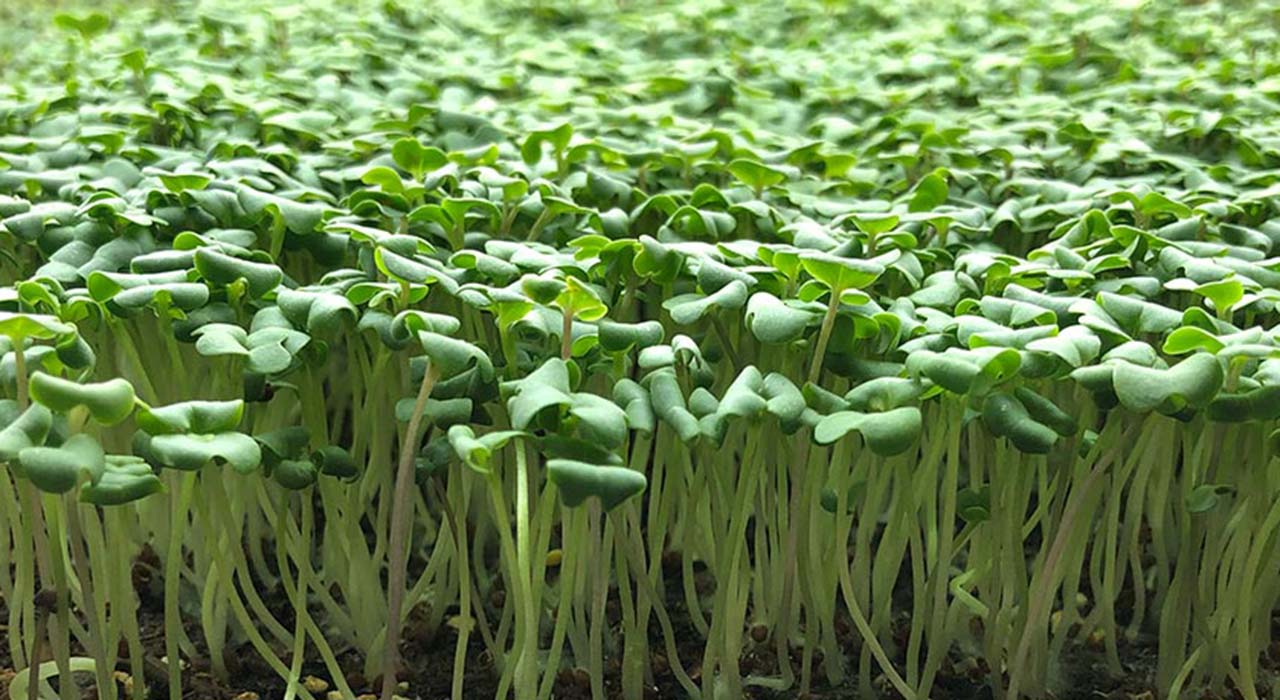
Beginning January, 2021, we started growing microgreens. This provides us with a healthy, locally grown, product to offer year-round.
Microgreens are vegetable greens (not to be confused with sprouts or shoots) harvested just after the cotyledon leaves (first leaves) have developed (and possibly, with one set of true leaves). They are used as a nutrition supplement, a visual enhancement, and a flavor and texture enhancement. Microgreens can add sweetness and spiciness to foods. Microgreens are smaller than “baby greens” because they are consumed very soon after sprouting, rather than after the plant has matured to produce multiple leaves. Microgreens are harvested just above the ground, leaving the soil and roots behind.
By contrast, sprouts are vegetable greens harvested prior to the cotyledons fully developing and are most often grown in soilless mediums and are eaten whole, including roots and often the seed.
Baby greens are allowed to grow to the point that the plants true leaves are allowed to develop but before the plant matures and becomes tougher.
Microgreens are a great addition to:
Some of the varieties we offer include:
Resources:
Website by Byers Media.